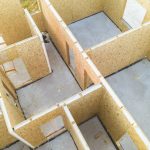Creating an indoor plant oasis is an ideal way of bringing the serene beauty of nature indoors. Regardless of whether you are a full-time gardening enthusiast or a novice, you can set up a small, indoor garden space that not only adds a dash of aesthetics to your living space but also purifies the air around you.
However, indoor gardening needs consistent maintenance, which includes regular watering, ensuring optimal light exposure, controlling temperature and monitoring the soil moisture. Automated watering and lighting systems can be a game-changer, reducing the hassle of indoor gardening maintenance, promoting healthy plant growth and making it possible to manage even when you are away.
Also to see : How to Plan a Low-Impact and Environmentally Sensitive Home Renovation?
Identifying the Right Plants for Your Indoor Oasis
Before you start setting up your indoor oasis, you need to understand that not all plants will thrive indoors, even with the best automated watering and lighting systems. The first step is to identify suitable indoor plants that can adapt to the limited light, space and often varying indoor temperatures.
Common indoor plants that can grow well under controlled conditions include Snake plant, ZZ plant, Spider plant, Heart leaf Philodendron, Peace lily, Jade plant, and Cacti. These plants are known for their hardiness, low maintenance and adaptability to indoor environments. While these plants don’t demand much attention, they’ll surely appreciate the consistency that an automated system will offer.
Designing Your Indoor Garden Space
Once you’ve identified the plants suitable for your indoor oasis, the next step is to design the space. This includes allocating the right amount of space for each plant, considering their growth pattern. For instance, a snake plant requires a small space as it grows vertically, while a spider plant, with its trailing growth, will need more room.
Your indoor garden design should also consider factors like proximity to natural light sources, temperature control systems, and aesthetic appeal. The placement of plants can significantly influence their growth. For example, plants with high light requirements should be placed near windows, while those that can survive in low light conditions can be placed in corners or on shelves.
Incorporating Automated Watering Systems
Automating the watering process can be the most significant part of your indoor plant maintenance. An automated watering system delivers the right amount of water at correct intervals, preventing overwatering or underwatering, both of which can harm your plants.
There are different types of automated watering systems available, like drip irrigation systems, self-watering pots and plant hydration mats. These systems work on the principle of delivering water to the plant’s soil at a slow and steady rate, ensuring the roots have access to consistent moisture levels.
Before incorporating an automated watering system, it’s crucial to understand the water needs of your plant. Some plants, like cacti or succulents, prefer drier soil, while others, like the peace lily, prefer consistently moist soil.
Ensuring Optimal Light Conditions with Automated Lighting
Indoor plants, albeit adaptable, still need a certain amount of light to carry on the process of photosynthesis. This is where an automated lighting system comes into play, compensating for the lack of natural sunlight in indoor spaces.
Automated lighting systems come in different forms, including LED grow lights and programmable timers. These systems ensure that your plants receive optimal light exposure, regardless of the time of day or season. LED grow lights, in particular, are energy-efficient and can provide a full spectrum of light, which is beneficial for plant growth.
Before setting up an automated lighting system, consider the light requirements of your plants. Some plants require bright, indirect light, while others can survive in low-light conditions.
Regular Maintenance and Monitoring
While automated watering and lighting systems take care of the essential needs of your indoor plants, regular maintenance and monitoring are still necessary. This includes checking the soil’s pH level, monitoring the plant growth, pruning when necessary, and regularly cleaning the leaves for dust.
The regular maintenance and monitoring also allow for early detection of any plant diseases or pest infestation. Despite the advantages of automation, remember that your plants are living beings that need your attention and care.
Creating an indoor plant oasis is a rewarding experience, and with an automated watering and lighting system, this process becomes easier and more efficient. It’s time to bring the green indoors and let the plants thrive under your care.
Utilizing Smart Gardens to Optimize Indoor Plant Care
In the realm of indoor gardening, the concept of smart gardens is a game-changer. A smart garden is a combination of an automated watering system, an automated lighting system, soil moisture sensors and temperature control devices, all connected to a central management system. This allows you to monitor and manage your indoor garden effortlessly, even from remote locations.
A smart garden takes care of the watering, lighting and temperature needs of your indoor plants, leaving you with more time to enjoy the bounty of your indoor oasis rather than worry about its maintenance.
For instance, soil moisture sensors in a smart garden monitor the moisture levels in the plant’s soil and provide the right amount of water at the right time. This prevents both overwatering and underwatering, common issues faced by indoor gardeners. Similarly, automated lighting systems ensure that your plants receive optimal light exposure to aid in photosynthesis and promote healthy plant growth. No need to worry if your indoor space doesn’t receive adequate sunlight – the smart garden has you covered.
By integrating smart garden technology, even small spaces can become a thriving oasis of indoor plants. However, as mentioned earlier, regular maintenance and monitoring are still necessary to ensure the overall health of your plants. Check for signs of pest infestation and implement pest control measures if necessary. Regularly pruning, cleaning of leaves, and monitoring of plant growth complement the benefits offered by automated systems.
Conclusion: Reap the Benefits of a Well-Maintained Indoor Oasis
Creating and maintaining an indoor plant oasis is indeed a delightful and rewarding experience. With the integration of automated watering and lighting systems, the task of maintenance becomes less daunting, making indoor gardening suitable even for those with busy schedules.
An indoor garden not only enhances the aesthetic appeal of your space but also purifies the air around you. The use of smart gardens ensures that your plants receive the right amount of water and light, promoting healthy plant growth and helping your plants thrive.
Although automated systems significantly reduce the maintenance needs of your indoor garden, remember that plants are living beings needing your attention and care. Regular monitoring, pest control, and maintenance are key determinants of your indoor garden’s success.
In conclusion, while indoor gardening may seem complex, it’s a journey worth embarking on. With the right tools and systems, you can create an indoor oasis that adds tranquility, beauty, and life to your living space. So, why wait? Start your indoor gardening journey today and let the joy of nurturing life enrich your everyday experience.











